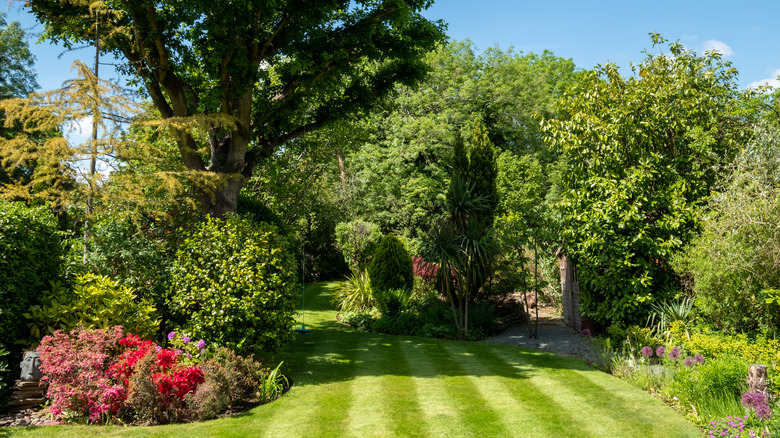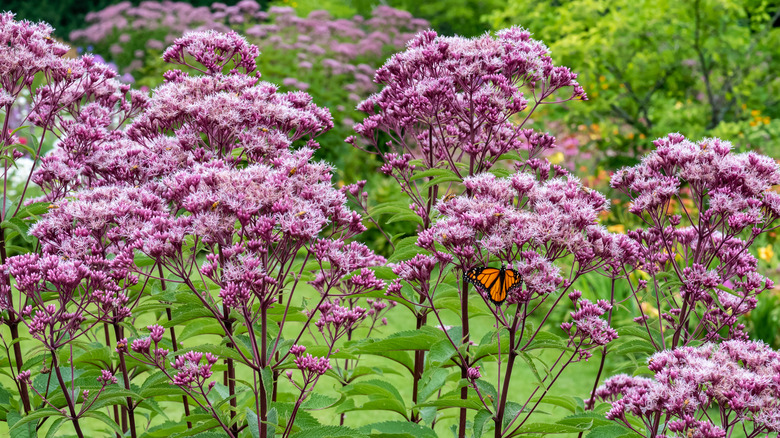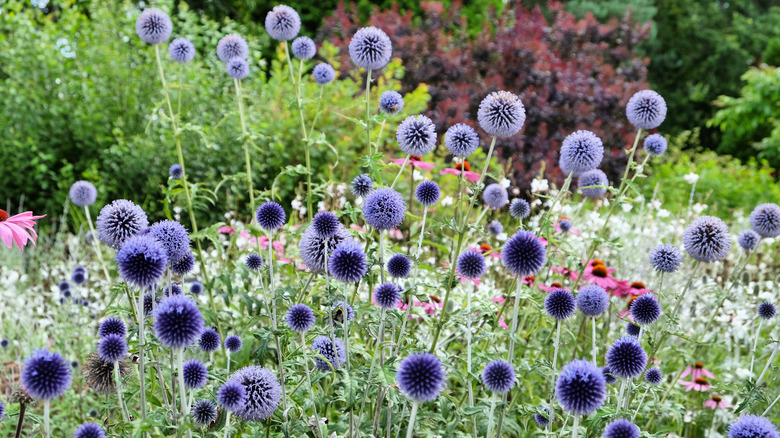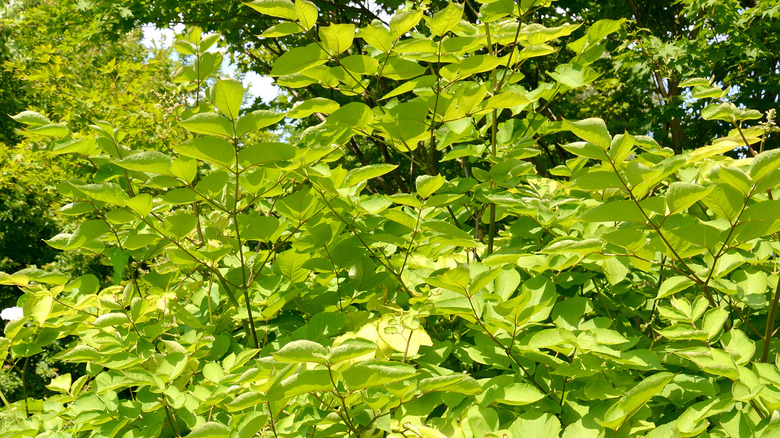The 3 Best Tall Plants You Can Add For A Fresh Look In Your Garden
Summer is the best time to start on a new project while also enjoying the warm and sunny weather. This can especially be true for gardeners as they try to decide how to update their beloved garden. There are several ways you can go about this depending on the aesthetic you're going for, but it definitely may be time to consider something fresh in order to add more life to your garden. Luckily, we've come up with a great idea that'll bring in more color, texture, and excitement.
Adding tall plants to your garden can be a great idea; this can create an interesting layered look to accentuate different colors. Midwest Gardening explains that tall plants create rhythm and bring balance to a garden. To achieve this yourself, you'll want your tall-plant additions to be at least 3 feet in height.
There are quite a few options that can provide your garden with this kind of height, but we've narrowed the list down to the best three tall plants we believe will be beneficial to your garden.
Joe-Pye weed
Joe-Pye weeds (Eutrochium spp.) are capable of growing about 4 to 6 feet tall, and although it is a weed, you'll actually want to add it to your garden, per Clemson's Home & Garden Information Center. The flowers of this tall plant have a soft fragrance that attracts butterflies and other insects that will help the rest of your garden stay healthy. Joe-Pye weed flowers turn into a soft pink, which makes them a beautiful background color for your other plants; the pink also won't overpower the other colors present.
Joy-Pye weeds are able to grow in USDA zones 4 to 8 and need a bit of attention during the first year of growth. The soil must be moist during the first year as the Joe-Pye weed establishes itself, and the soil should have a bit of organic material mixed in. After that, this plant can survive in dry environments, but it would prefer moist and well-drained soil.
Veitch blue
The veitch blue (Echinops ritro) is considered as one of the best globe thistles to grow, according to Gardenia. This plant produces dark violet orb flowers with pointed tips, and is a great option if you'd like to add contrast to your garden — both in height and texture. This plant is also easy to take care, and its flowers bloom more than once each season. The veitch blue is capable of growing 3 to 4 feet tall and will make a great option for a border plant.
As this plant grows, it prefers a moist environment. But later in its life, the veitch blue prefers to be under the full rays of the sun, while also sitting in dry to medium soil — be sure not to use rich soils. It's also able to repel deers and rabbits, which can help keep the rest of your garden safe from harm.
Japanese spikenard
If you're looking to add tall, luscious greenery to your garden, the Japanese spikenard (Aralia cordata) might be the best option for you. This plant can grow anywhere between 3 to 6 feet high with a matching width. It can grow in USDA zones 4 to 8, according to the Missouri Botanical Garden. It blooms from July to September and displays a wide spread of green leaves, with some painted with soft, white shades.
The Japanese spikenard grows best in areas where there is partial shade; it requires soil that's moist, fertilized, and well-drained. This tall plant also needs a moderate amount of water, and it works well as a flower border.
Also, in addition to being a tall plant for your garden design, it's also a herbaceous perennial. The plant's white roots and young leaves can be introduced as part of a healthy diet. In fact, this plant, aka "Sun King," has often been referred to as a delicacy in Japan, as its youthful shoots have been compared to the flavor of asparagus. As Better Landscape Design notes, it's commonly known as mountain asparagus.



